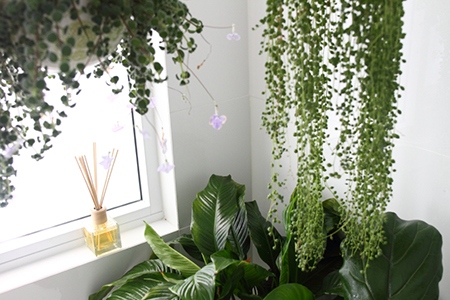 Adding a houseplant or two always seems to improve the look of a room. But as it turns out, certain houseplants can also improve your health. According to recent studies by NASA, some houseplants filter out dangerous compounds that are commonly found in most homes – the kind of compounds that are often associated with respiratory illnesses, cancer, and other conditions.
Adding a houseplant or two always seems to improve the look of a room. But as it turns out, certain houseplants can also improve your health. According to recent studies by NASA, some houseplants filter out dangerous compounds that are commonly found in most homes – the kind of compounds that are often associated with respiratory illnesses, cancer, and other conditions.
Because they are enclosed spaces, our homes are vulnerable to gaseous toxins that build up over time. These include:
- Benzene – caused by paints, detergents, and furniture wax,
- Formaldehyde – caused by disinfectants or preservatives in consumer products
- Toluene and Xylene – caused by a variety of household and consumer products
- Ammonia – caused by commonly used aerosols and sprays
But 10 NASA-approved houseplants are says to be effective in removing air pollutants:
- English Ivy – a trailing ivy plant that requires partial shade and light weekly watering
- Florist’s chrysanthemum – A lovely floral that needs direct light and frequent change of water
- Peace Lily – Produces small, white flowers. Needs weekly watering. But consider carefully before buying, because this plant can be poisonous to house pets
- Variegated snake plant – Has tall, broad, green and white leaves. Requires partial shade and weekly watering
- Red-edged dracaena – Almost cactus-like in appearance, this plant needs direct sunlight and weekly watering
- Cornstalk dracaena – Produces cornstalk-type leaves. Wants partial shade and weekly watering
- Broadleaf lady palm – Fern-like plant that likes partial shade and weekly watering
- Flamingo lily – Also known as anthurium, this plant produces shiny red flowers and requires partial shade and weekly watering
- Devil’s ivy – produces luxurious ivy leaves, likes partial shade, and needs only monthly watering
- Lilyturf – Produces purple flowers. Requires partial shade and weekly watering.
*Take note: Water lightly in most cases, as over-watering can cause root rot and kill the plant.











